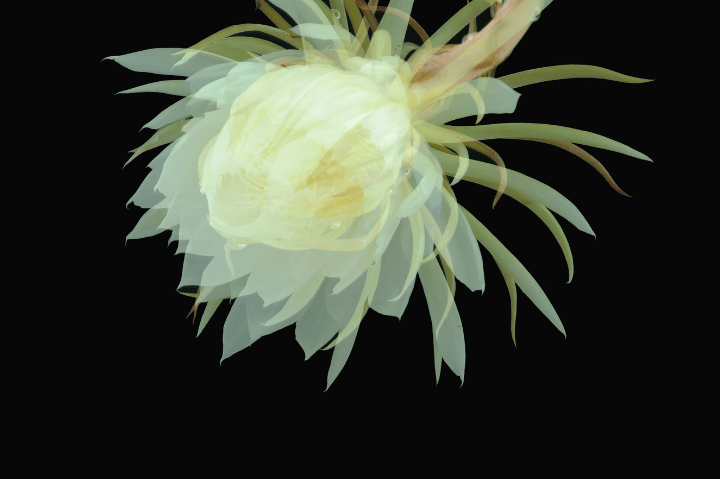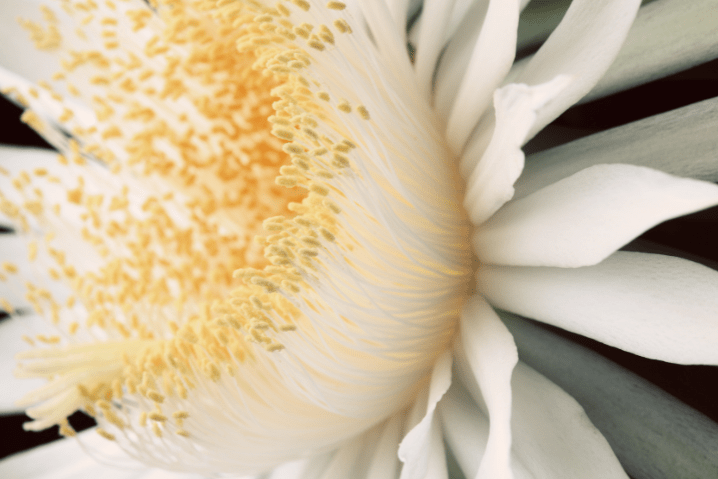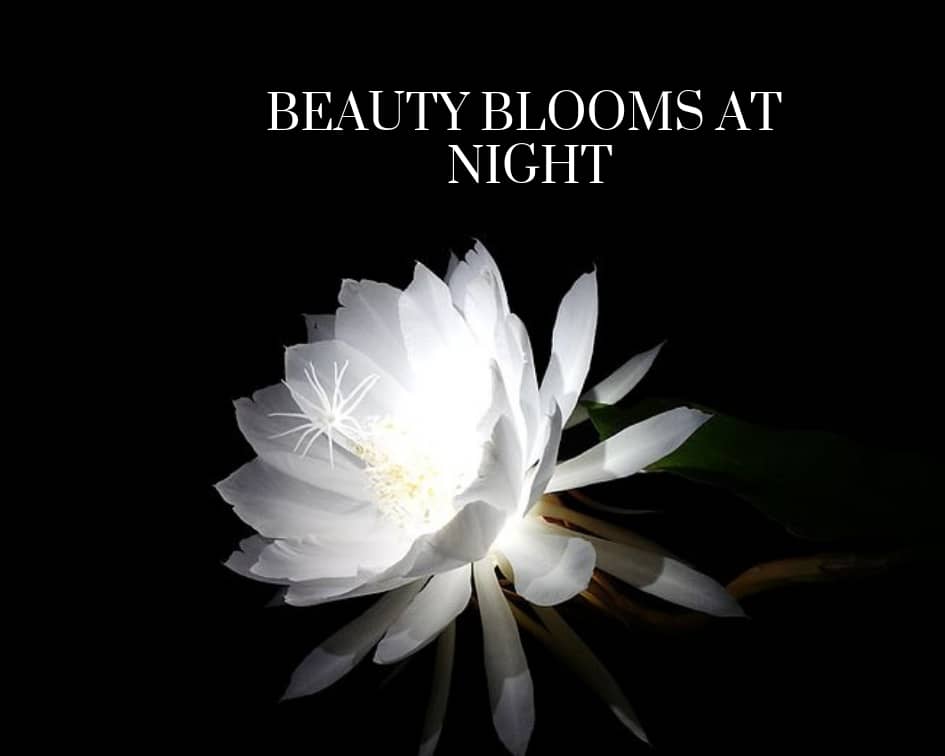This post may contain affiliate links. As an Amazon Associate we earn from qualifying purchases.
Night blooming cereus adds a touch of the surreal to the garden in the evening.
There are several different plants that use the name night-blooming cereus, and we will be referring to Epiphyllum oxypetalum in this post. To make matters even more confusing, this plant and another, Selenicereus grandiflorus, sometimes share the nickname “queen of the night plant.”
Like the queen of the night, our girl blooms only at night and when the flower closes at the first hint of daylight, it never reopens. The flowers are huge, white and highly fragrant. A climbing plant, it can reach a height of 30 feet.
If you live in a warm, tropical climate you can grow this stunner outdoors (technically hardy in USDA zones 10 and up). The rest of us must be content to grow it in a pot, allowing it to summer outdoors and bringing it indoors when the weather cools.
Let’s take a look at what it takes to grow this tropical beauty.
Light and Temperature Needs
Night-blooming cereus thrives when grown in lots of bright sunlight and heat – over 90 degrees Fahrenheit in the summer. If you live in an area that provides the plant’s requirements for growing outdoors, grow the cereus in the part of the garden that is the warmest and receives the most sun.
Give it an eastern exposure if you live in an area with hot afternoon sun. Indoors, place the plant in the window that receives the most sunshine.
 Which Soil Should I Use?
Which Soil Should I Use?
After sunlight, success growing the night-blooming cereus depends on the type of soil in which it is grown. Well-drained is a soil description that is tossed around frequently and it may be a bit of an understatement when it comes to this plant.
Since it has a small root system, quick draining soil is a must to keep the roots from rotting. Use a commercial cactus mix for potted plants. Sungro makes a decent, inexpensive mix (available here, at Amazon.com) and if you’re going organic, or want a higher quality mix, check out this coir-based blend, also at Amazon.
If you’re growing it outdoors, amend the soil with 3 inches of very coarse sand.
Water and Fertilizer
Too much water, in case you haven’t figured it out yet, will kill the night-blooming cereus. Wait until the soil is dry, dry, dry to water. Then, soak it, allow it to drain and, hands off — no more water until the soil is completely dry.
Give it a dose of standard houseplant fertilizer, diluted with water to half strength, in late spring. Then, in fall and winter, cut back on the water and don’t fertilize.
Grow Night-Blooming Cereus in Containers
Container-grown night-blooming cereus plants require heavy, porous pots, such as those made from unglazed terracotta. The plants tend to become top-heavy as they mature so the heavier the pot, the less the danger of the pot tipping over.
Since the night blooming cereus require fast-draining and drying soil, avoid the use of glazed pots that block the air from penetrating.
And, ensure the container has adequate holes in the bottom so the water drains freely.
 Encourage your night-blooming cereus to bloom
Encourage your night-blooming cereus to bloom
There are several ways to encourage the night-blooming cereus plant to produce flowers.
It tends to bloom when its roots are crowded, so avoid moving it into a larger pot until it completely fills the current pot with roots.
In July, move the plant into an area that remains completely dark from dusk until dawn and allow it to remain there until October. Keep the temperature at 50 degrees F and stop watering the night-blooming cereus in January. Start watering again four weeks later. The plant should bloom six to eight weeks later.
Take lots of photos that evening and enjoy it while you can. The night-blooming cereus will wilt by morning.
Interested in growing this gorgeous plant? Buy cuttings online, here.
Photo courtesy Aswin KP – Own work, CC BY-SA 4.0



